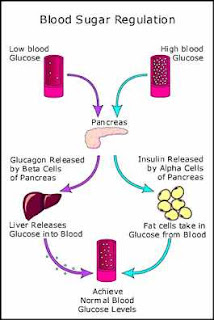
1. Boris P. Kovatchev, PHD1,
2. Erik Otto, MBA2,
3. Daniel Cox, PHD1,
4. Linda Gonder-Frederick, PHD1 and
5. William Clarke, MD1
OBJECTIVE-Recent studies show the importance of controlling blood glucose variability in terms of reducing hypoglycemia and attenuating the risk of cardiovascular complications and behavioral disorders due to hyperglycemia. It is therefore important to develop measures of variability that equally predict low and high glycemic excursions.
RESEARCH DESIGN AND METHODS-We present an average daily risk range (ADRR), rate variability in normal self-blood glucose (SMBG) data. In ADRR comes with a database of 39 and 31 adults with type 1 and type 2 diabetes. This formula is, and ADRR compared with other measures of variability in the independent verification of data in ~ 4 months of SMBG for 254 and 81 adults with type 1 and type 2 diabetes.
The results of 1 month of confirmation of SMBG data, we estimate ADRR, SD of blood glucose and the coefficient of variation, daily blood glucose range and interquartile range, the amplitude of glycemic excursion, the M-value, and lability index. Then all measures were examined as predictors of low blood glucose levels (<2.2> 10 mmol / L,> 22.2 mmol / l) in the following events: from 3 -- x months ago. In ADRR is the best predictor for hypoglycemia and hyperglycemia, an increase of 6 times greater risk of hypoglycemia, and 3.5 times higher risk of hyperglycemia their risk.
CONCLUSIONS In a large database of the APS, the ADRR showed a strong association with subsequent out of control glucose readings. Variability in relation to other actions that ADRR showed excellent balance of sensitivity to predicting both hypoglycemia and hyperglycemia. This forecast does not depend on the type of diabetes.
Source : http://care.diabetesjournals.org
Health information, Clinical Pathology,medical equipment, Anemia, Blood, Cholesterol, Kardiovaskuler, Hemostasis, Microscope,etc
Advertiser
Categories
- Anemia (4)
- Blood cells (3)
- cardiovasculer (1)
- cholesterol (3)
- glucose (1)
- Hemostasis (1)
- Medical Equipment (1)
- reproductive health (1)
- Sediment Urine (2)
- System Endokrin (2)
- Women (2)
sponsor ads
Live Traffic Feed
Original design by Blogging Secret | Sponsored by System Monitoring | Ads Theme Blogger Template
